A music sequencer is a device or application software that can record, edit, or play back music, by handling note and performance information in several forms, typically CV/Gate, MIDI, or Open Sound Control, and possibly audio and automation data for digital audio workstations (DAWs) and plug-ins.
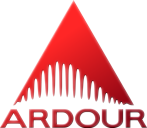
Ardour is a hard disk recorder and digital audio workstation application that runs on Linux, macOS, FreeBSD and Microsoft Windows. Its primary author is Paul Davis, who was also responsible for the JACK Audio Connection Kit. It is intended as a digital audio workstation suitable for professional use.

FL Studio is a digital audio workstation (DAW) developed by the Belgian company Image-Line. It features a graphical user interface with a pattern-based music sequencer. The program is available in four different editions for Microsoft Windows and macOS.

Cubase is a digital audio workstation (DAW) developed by Steinberg for music and MIDI recording, arranging and editing. The first version, which was originally only a MIDI sequencer and ran on the Atari ST computer, was released in 1989. Cut-down versions of Cubase are included with almost all Yamaha audio and MIDI hardware, as well as hardware from other manufacturers. These versions can be upgraded to a more advanced version at a discount.

Virtual Studio Technology (VST) is an audio plug-in software interface that integrates software synthesizers and effects units into digital audio workstations. VST and similar technologies use digital signal processing to simulate traditional recording studio hardware in software. Thousands of plugins exist, both commercial and freeware, and many audio applications support VST under license from its creator, Steinberg.

A digital audio workstation is an electronic device or application software used for recording, editing and producing audio files. DAWs come in a wide variety of configurations from a single software program on a laptop, to an integrated stand-alone unit, all the way to a highly complex configuration of numerous components controlled by a central computer. Regardless of configuration, modern DAWs have a central interface that allows the user to alter and mix multiple recordings and tracks into a final produced piece.

Audio editing software is any software or computer program which allows editing and generating audio data. Audio editing software can be implemented completely or partly as a library, as a computer application, as a web application, or as a loadable kernel module. Wave editors are digital audio editors. There are many sources of software available to perform this function. Most can edit music, apply effects and filters, and adjust stereo channels.

Audio Stream Input/Output (ASIO) is a computer sound card driver protocol for digital audio specified by Steinberg, providing a low-latency and high fidelity interface between a software application and a computer's sound card. Whereas Microsoft's DirectSound is commonly used as an intermediary signal path for non-professional users, ASIO allows musicians and sound engineers to access external hardware directly.
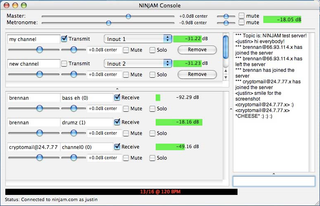
NINJAM stands for Novel Intervallic Network Jamming Architecture for Music. The software and systems comprising NINJAM provide a non-realtime mechanism for exchanging audio data across the internet, with a synchronisation mechanism based on musical form. It provides a way for musicians to "jam" (improvise) together over the Internet; it pioneered the concept of "virtual-time" jamming. It was originally developed by Brennan Underwood, Justin Frankel, and Tom Pepper.

PulseAudio is a network-capable sound server program distributed via the freedesktop.org project. It runs mainly on Linux, including Windows Subsystem for Linux on Microsoft Windows and Termux on Android; various BSD distributions such as FreeBSD, OpenBSD, and macOS; as well as Illumos distributions and the Solaris operating system. It serves as a middleware in between applications and hardware and handles raw PCM audio streams.
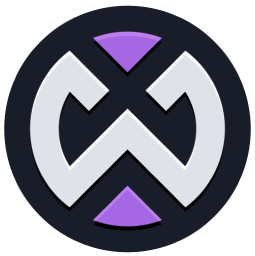
Waveform is a digital audio workstation for recording and editing audio and MIDI. The software is cross-platform, that runs on Apple macOS, Microsoft Windows, and Linux.
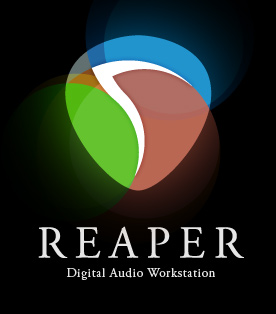
REAPER is a digital audio workstation and MIDI sequencer application created by Cockos. The current version is available for Microsoft Windows and macOS, as well as for Linux. REAPER acts as a host to most industry-standard plug-in formats and can import all commonly used media formats, including video. REAPER and its included plug-ins are available in 32-bit and 64-bit format.

LV2 is a set of royalty-free open standards for music production plug-ins and matching host applications. It includes support for the synthesis and processing of digital audio and CV, events such as MIDI and OSC, and provides a free alternative to audio plug-in standards such as Virtual Studio Technology (VST) and Audio Units (AU).
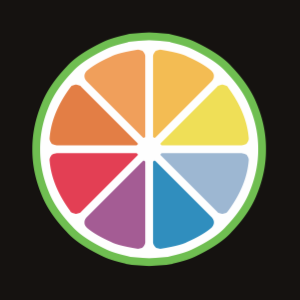
JUCE is an open-source cross-platform C++ application framework, used for the development of desktop and mobile applications. JUCE is used in particular for its GUI and plug-ins libraries. It is dual licensed under the GPLv3 and a commercial license.
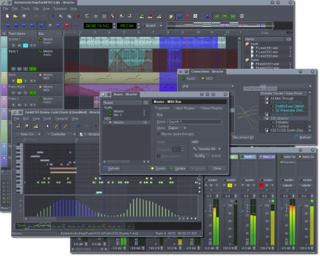
Qtractor is a hard disk recorder and digital audio workstation application for Linux. Qtractor is written in C++ and is based on the Qt framework. Its author is Rui Nuno Capela, who is also responsible for the Qjackctl, Qsynth and Qsampler line of Linux audio software. Qtractor's intention was to provide digital audio workstation software simple enough for the average home user, and yet powerful enough for the professional user.

Studio One is a digital audio workstation (DAW) application, used to create, record, mix and master music and other audio, with functionality also available for video. Initially developed as a successor to the KRISTAL Audio Engine, it was acquired by PreSonus and first released in 2009 for macOS and Microsoft Windows. PreSonus and Studio One were then acquired by Fender in 2021.

Bitwig Studio is a proprietary digital audio workstation developed by Bitwig GmbH. Bitwig is available for Linux, macOS, and Windows. Bitwig is designed to be an instrument for live performances as well as a tool for composing, recording, arranging, mixing, and mastering. It offers a suite of controls for beatmatching, crossfading, and other effects used by turntablists. Bitwig supports both traditional linear music arrangement and non-linear (clip-based) production. It has multi-monitor and touch screen support. Bitwig is notable for its strong modulation, and automation capabilities. The current stable version of Bitwig is "Bitwig Studio 5.0.x". In 2017, Bitwig Studio was named DAW of the year by Computer Music magazine.
VCV Rack is a free and open-source cross-platform software modular synthesizer.














